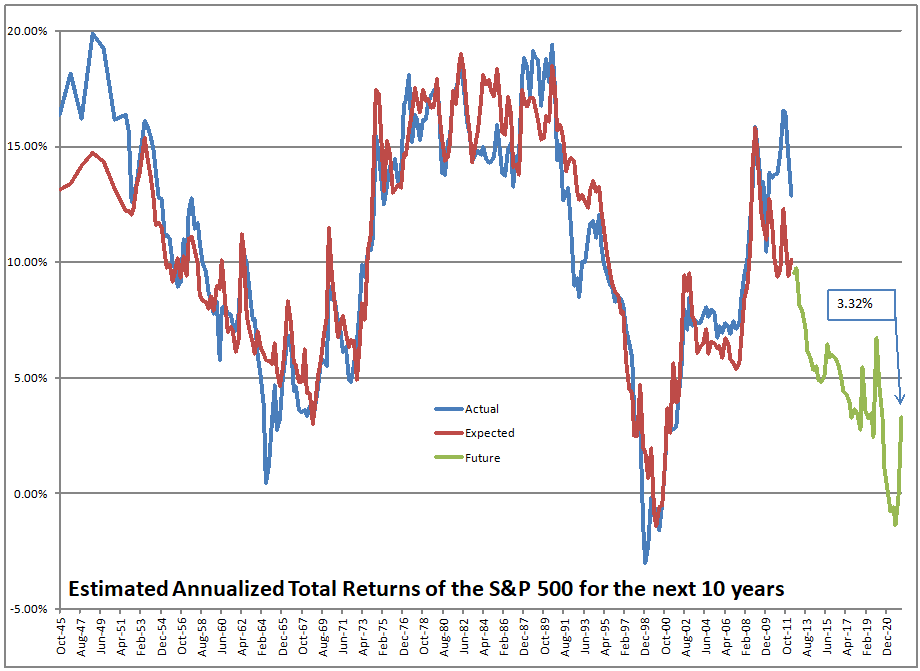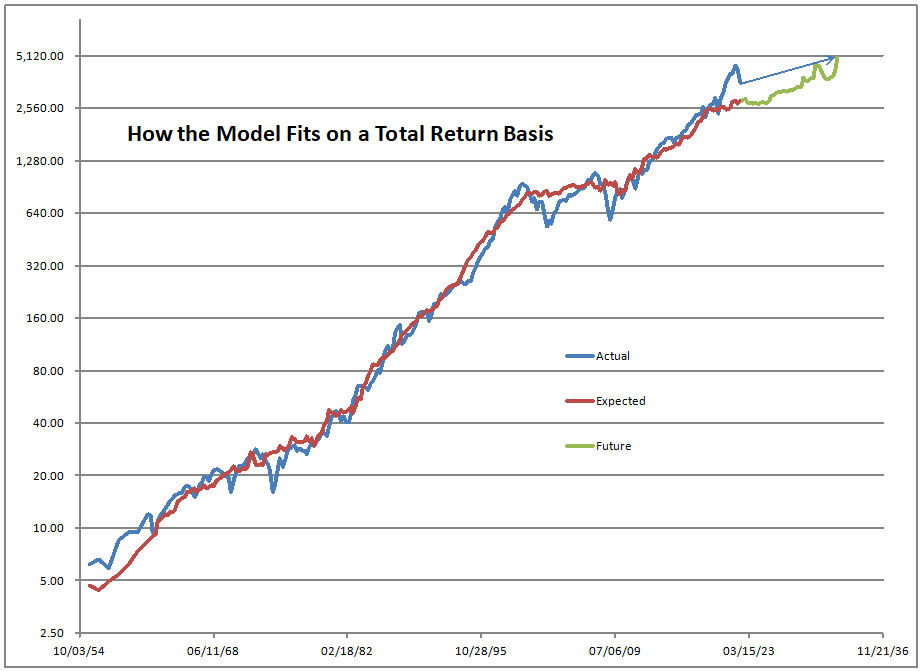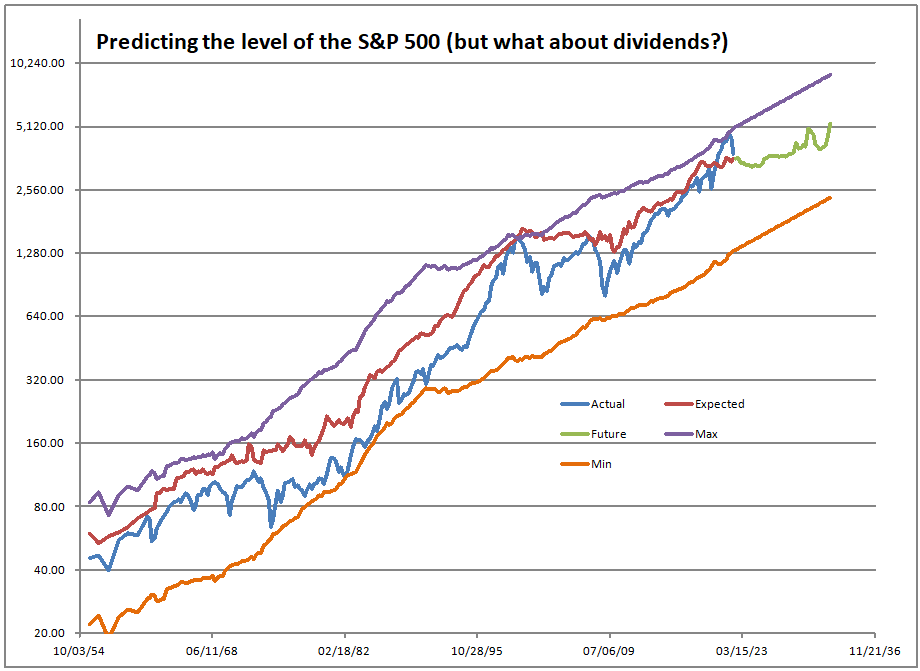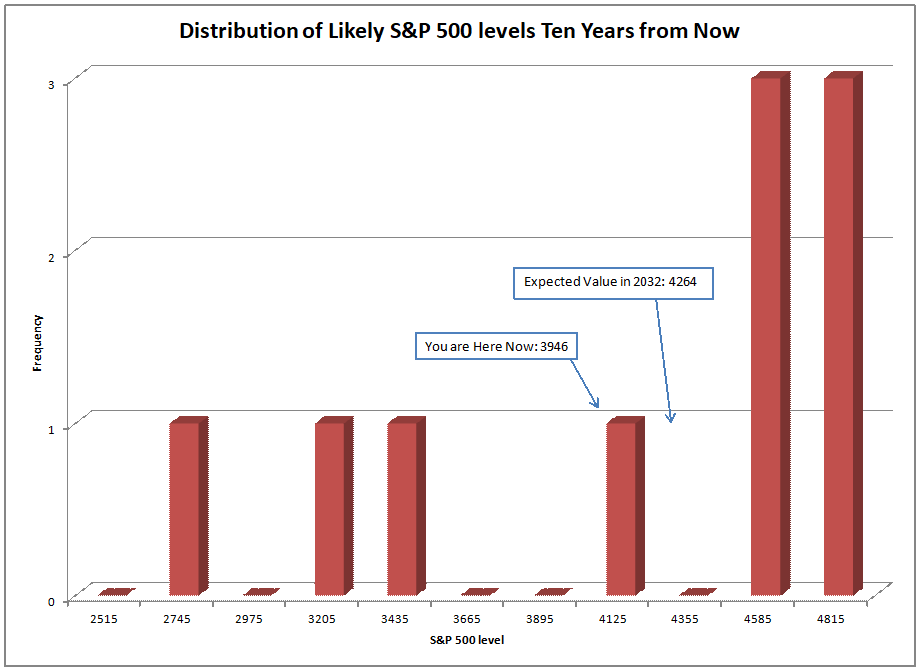Estimating Future Stock Returns, June 2022 Update

Graph Credit: Aleph Blog || How do you feel about 3.00%/year nominal returns over the next 10 years? That’s less yield than the 10-year T-note
Stocks always beat bonds. Stocks always beat bonds. Stocks always beat bonds. Stocks always beat bonds.
Quite a mantra. And for those with a long time horizon, this is true. What I am telling you this evening is if you want that to work for you, your time horizon should be greater than ten years. With the ten-year T-note yielding 3.41%, the S&P 500 at 3946 indicates likely nominal returns of 3.00%/year over the next ten years. Though the bond market has had a lousy year, many of the times I wrote about this over the last few years, the S&P 500 had return expectations in line with a 10-year single-A corporate bond. When the market indicates returns lower than a 10-year T-note, it is still quite expensive (95th percentile).
As the end of December 2021 was near the recent highs, so the end of June 2022 was near the recent lows, projecting a nominal 3.32%/year return for the S&P 500 over the next ten years. The weak rally of the last eleven weeks has reduced future returns to 3.00%.
So what to do? For me, not much. I have always kept my asset allocation around 70% risky, and 30% safe. I am near that now and don’t feel the need to panic. I like the stocks that I own for me and my clients. We are up this year. All that said, I haven’t had a good year prior to this since 2013. Versus the broad market, my performance has been poor as value has lagged, and I am more value-y than most value managers.

Graph Credit: Aleph Blog

Graph Credit: Aleph Blog

Graph Credit: Aleph Blog
The histogram above attempts to show scenarios when likely returns per year were within 1% of where they are now. Positive returns are expected with a considerable left tail.
So What Might Happen?
My view here is that the Fed will overshoot in tightening, leading the stock market to new lows in this bear market. Ray Dalio has said something like this. Looking at the ’70s or the Great Financial Crisis is not what I would look at. My best analogy here is the dot-com bubble.
I remember from that era how many people said that Fed policy was irrelevant to growth stocks. When the yield curve inverts, those who finance long assets with short-term debt blow up. During the dot-com bubble, that was mostly tech firms. The banks were mostly not affected. That is true today, as the banks are in good shape.
So expect:
- The yield curve gets more inverted
- Stocks to fall, especially growth stocks
- Real GDP will decline
- Commodities will suffer
- The Fed will panic, and loosen in 2023
That’s all for now. I have been going through a hard period in my life, thus I have not been posting much.
More By This Author:
Neither A Crypto Borrower Nor A Lender BeConcealing Volatility
Separate Processes: The Decoupling Of Inflation And Interest Rates



